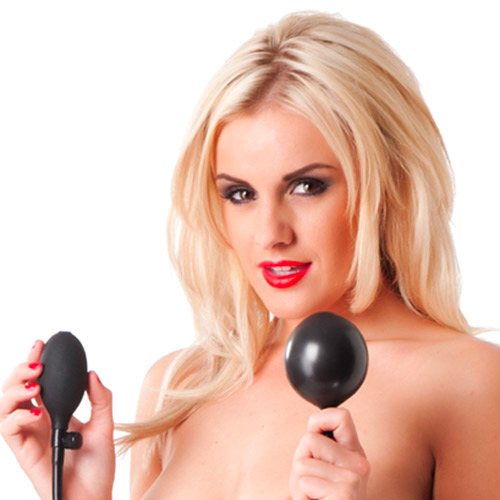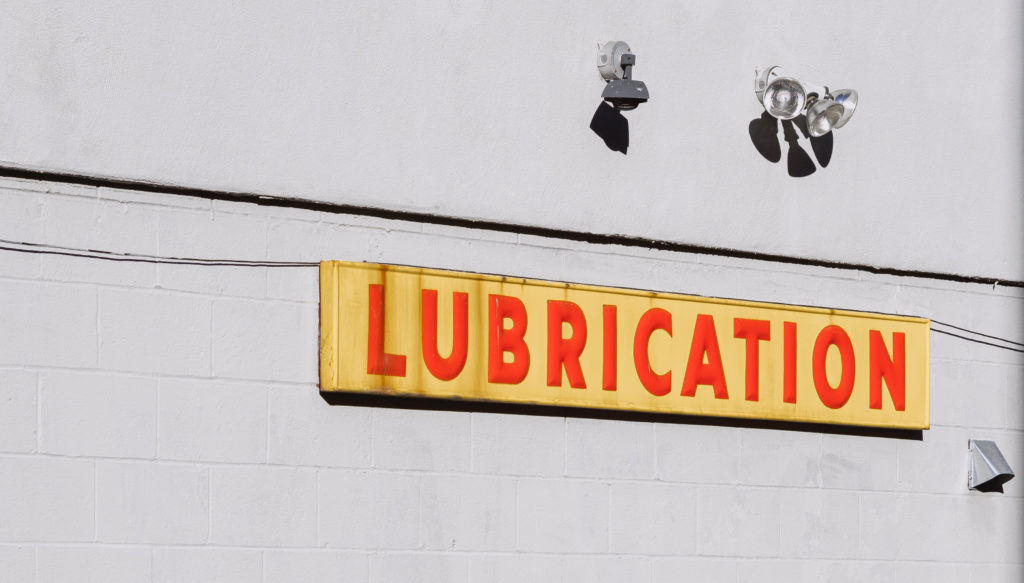The world of sex toys is vast and diverse, offering countless options for pleasure and exploration. But did you know that this seemingly modern industry has roots dating back thousands of years? The history of sex toys is a captivating tale of human desire, creativity, and resilience, weaving its way through ancient civilisations, religious taboos, and societal shifts. As we delve into the story of these pleasure-enhancing devices, we’ll uncover the ingenuity of our ancestors and observe how sex toys have evolved alongside our ever-changing understanding of sexuality and intimacy. So, let’s embark on a fascinating journey through time and discover the origins, development, and progression of sex toys that have brought satisfaction and self-discovery to countless individuals across the ages.
The Ancient World
Sex toys have been an integral part of human history for thousands of years, with artefacts and records from ancient civilisations reflecting their use and importance in society. Let’s take a closer look at some notable examples from the ancient world.
Ancient Greece
In Ancient Greece, sex toys played a prominent role in society, and they were often used by women during times when their partners were away. The Greeks created “olisbos,” phallic-shaped objects made from various materials such as stone, wood, or leather, designed for sexual pleasure. Greek art and literature provide ample evidence of the use of olisbos, with some texts even mentioning their use for both heterosexual and homosexual encounters. Additionally, Ancient Greek pottery often depicted scenes of sexual activity, sometimes featuring the use of olisbos.
Ancient Egypt
The ancient Egyptians also embraced sexuality and the use of sex toys. Phallic imagery was widespread in their culture, symbolising fertility, regeneration, and divine power. Clay or stone dildos have been found in tombs and archaeological sites, suggesting that they were used not only for pleasure but also for ritual purposes. Moreover, ancient Egyptian texts, such as the Turin Erotic Papyrus, depict various sexual acts and positions, providing further evidence of their culture’s openness to sexual exploration.
Ancient China
In ancient China, the use of sex toys was also prevalent. They employed “yin-yang” stones, which were smooth, polished stones used for sexual stimulation. These stones were often made from jade, a material believed to have spiritual and healing properties. The ancient Chinese viewed sexuality as an essential aspect of overall well-being, and the use of yin-yang stones was thought to help balance the body’s energy and promote good health.
Ancient Rome
The Romans, known for their hedonistic lifestyles and appreciation of pleasure, also utilised sex toys. Phallic-shaped objects made from various materials, such as bronze or glass, have been discovered in Roman archaeological sites. Furthermore, Roman frescoes and mosaics, especially those found in Pompeii, depict the use of sex toys in various contexts. It is worth noting that Roman society was generally more accepting of sexual exploration, and this acceptance was reflected in their attitudes towards sex toys.
Ancient India
Ancient India is another civilisation that embraced sexuality and the use of sex toys. The Kama Sutra, a famous ancient Indian text on sexuality and pleasure, discusses the use of various devices for sexual stimulation. Some of these devices include dildos made from materials like wood, gold, silver, or ivory. The Kama Sutra also describes the importance of sexual pleasure and the role it plays in achieving a harmonious and fulfilling life.
The Middle Ages
The Middle Ages, spanning from the 5th to the 15th century, were marked by significant social and religious changes that influenced attitudes towards sexuality and the use of sex toys. Despite these changes, people continued to seek pleasure and satisfaction through various means, including the use of objects for sexual stimulation.
Religious Influence and Taboos
During the medieval period, religious institutions wielded considerable influence over societal norms and values, shaping views on sex and pleasure. Christian teachings emphasised sexual restraint, and activities outside the confines of procreation within marriage were often considered sinful. As a result, the use of sex toys was largely seen as taboo or immoral. Nonetheless, people continued to explore their desires and seek pleasure, often in secret.
Medical Devices and “Hysteria”
Despite the religious and societal restrictions of the time, some objects and practices from the Middle Ages hinted at the use of sex toys. One such example is the treatment of “hysteria,” a condition believed to affect women experiencing sexual frustration. Physicians at the time employed “pelvic massage” as a treatment for this condition, using various devices to stimulate the genital area until “hysterical paroxysm,” or orgasm, was achieved. The devices used for these treatments can be seen as precursors to modern vibrators and other sex toys.
Art and Literature
While explicit references to sex toys were relatively scarce during the Middle Ages, various forms of art and literature from the period alluded to sexuality and pleasure. Erotic manuscripts, often circulated among the upper classes, depicted scenes of sexual activity and occasionally featured the use of objects for stimulation. Additionally, some medieval sculptures and carvings displayed phallic imagery, hinting at the continued fascination with and use of sex toys.
Coded Language and Disguised Objects
In response to the taboos surrounding sex toys during the Middle Ages, people often used coded language or disguised objects to explore their desires. For instance, phallic-shaped objects made from various materials, such as wood or ivory, were sometimes crafted to resemble everyday items, like walking sticks or candlesticks, allowing their use to remain concealed.
The Renaissance and Beyond
The Renaissance, spanning from the 14th to the 17th century, marked a significant shift in attitudes towards sexuality and pleasure. This period, characterised by a renewed interest in art, science, and humanism, saw a more open approach to discussing sex and the use of sex toys. The advancements made during the Renaissance and the centuries that followed laid the groundwork for the development of more sophisticated devices and a broader acceptance of sex toys in society.
Renaissance Art and Literature
The Renaissance brought forth a resurgence of interest in the human body, as seen in the works of artists like Leonardo da Vinci and Michelangelo. This focus on the human form extended to depictions of sexuality and pleasure in art, literature, and poetry. Erotic literature circulated among the educated classes, often featuring descriptions of sexual encounters that included the use of sex toys. Additionally, artists incorporated phallic imagery and representations of sexual pleasure in their works, reflecting a more open attitude towards sexuality and sex toys.
Advancements in Technology and Manufacturing
The Renaissance and the centuries that followed saw considerable advancements in technology and manufacturing processes. These advancements contributed to the development of more intricate and effective sex toys made from various materials, such as glass, metal, and porcelain. For example, the invention of the spring mechanism in the 18th century allowed for the creation of the first manual vibrators. These devices, often featuring intricate designs and decorations, were used by physicians to treat female hysteria.
The Emergence of Vibrators
In the 19th century, the invention of electricity revolutionised the sex toy industry with the development of the first electric vibrators. Initially marketed as medical devices to treat female hysteria, vibrators quickly gained popularity and became more widely available to the general public. As their popularity grew, vibrators were advertised in women’s magazines and sold through mail-order catalogs. The design and functionality of vibrators continued to evolve over the years, with new materials like rubber and plastic becoming more common.
The Rise of Erotic Novels
During the 18th and 19th centuries, the rise of erotic novels contributed to a more open discussion of sexuality and the use of sex toys. These novels, such as “Fanny Hill” by John Cleland and “The Lustful Turk” by Anonymous, often featured explicit descriptions of sexual encounters, including the use of sex toys. The widespread availability of these novels, due in part to the invention of the printing press, helped to normalise discussions of sexual pleasure and exploration.
The Sexual Revolution and Modern Sex Toys
The 20th century brought about significant changes in societal attitudes towards sex, pleasure, and the use of sex toys. The sexual revolution of the 1960s and 1970s played a crucial role in breaking down taboos and destigmatizing the discussion and use of sex toys. This period of social and cultural transformation, coupled with advancements in technology and manufacturing, paved the way for the modern sex toy industry we know today.
The Sexual Revolution
The sexual revolution was a period of rapid change in societal attitudes towards sex, relationships, and gender roles. During this time, people began to challenge traditional norms and embrace more liberal views on sexuality, leading to increased acceptance of sexual exploration and experimentation. This newfound openness extended to the use of sex toys, which became more widely discussed and accepted as tools for enhancing pleasure and intimacy.
Advancements in Materials and Design
The 20th century saw significant advancements in materials science and manufacturing processes, which greatly impacted the sex toy industry. New materials like silicone, rubber, and plastic became more common, allowing for the development of a wide range of sex toys that were safer, more comfortable, and more effective. These advancements also facilitated the creation of more intricate and innovative designs, with sex toys catering to a diverse range of preferences and experiences.
The Role of Feminism
The feminist movement played a significant role in the acceptance and normalization of sex toys during the 20th century. By promoting women’s sexual empowerment and autonomy, feminism contributed to the growing demand for sex toys that catered to women’s pleasure. This led to the development of new products, such as clitoral vibrators and other female-centric sex toys, designed specifically to meet women’s needs and desires.
The Internet and E-commerce
The rise of the internet and e-commerce in the late 20th and early 21st centuries further transformed the sex toy industry. Online shopping provided consumers with discreet access to a vast array of sex toys and related products, while also offering a platform for education and discussion about sexual pleasure and exploration. The internet also allowed for the growth of niche markets, catering to various interests and preferences, making sex toys more accessible and inclusive than ever before.
Sex Toys for Couples and LGBTQ+ Communities
As the sex toy industry evolved, so too did the range of products available for different types of relationships and sexual orientations. The modern sex toy industry now offers products designed for couples, such as remote-controlled vibrators and couples’ kits, which aim to enhance intimacy and pleasure for both partners. Additionally, the increased visibility and acceptance of LGBTQ+ communities have led to the development of sex toys specifically designed to cater to the unique needs and desires of these individuals, promoting inclusivity and diversity within the industry.
Conclusion
Tracing the history of sex toys reveals an intricate tapestry of human ingenuity, desire, and adaptability. From the ancient civilizations that crafted stone and wood phalluses to the modern-day advancements in materials, technology, and design, our pursuit of pleasure has been a constant force throughout time. By examining the diverse cultural and historical contexts in which sex toys have emerged, we gain a deeper understanding of how they have evolved alongside our ever-changing perspectives on sexuality and intimacy.
The history of sex toys also serves as a testament to the resilience and creativity of the human spirit, as people have continually sought ways to explore and fulfill their desires, even in the face of societal taboos and restrictions. The growth and diversification of the sex toy industry in recent years have made pleasure and sexual exploration more accessible and inclusive, reflecting the ongoing progress in embracing and celebrating our diverse desires and experiences.
As we look towards the future, the history of sex toys encourages us to continue pushing the boundaries of sexual exploration, fostering open conversations about pleasure, and striving for innovation in the pursuit of a more fulfilling and empowering understanding of human sexuality.


